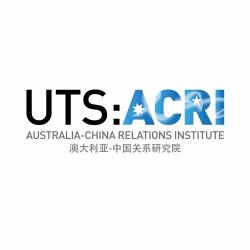Guest: Nick Henderson, Director, China Practice, Asialink Business
Host: James Laurenceson, Deputy Director, Australia-China Relations Institute, University of Technology Sydney
As China’s domestic economy and per capita income has grown since the beginning of the Chinese government’s ‘reform and opening up’ strategy, the opportunities presented by the Chinese market for global businesses have become widely known. Yet the bulk of international attention is focused on a few large cities: Beijing, Shanghai, Shenzhen, and Guangzhou, colloquially known as Bei-Shang-Guang-Shen. A 2017 Morgan Stanley report argued that private consumption in China could grow to US $9.7 trillion by 2030, with a major proportion of that growth being driven by smaller cities outside of the major commercial hubs around Bei-Shang-Guang-Shen - the metropolises recognised as “tier one cities”.
What exactly is the tier system, and how are cities assigned to tiers? What kinds of opportunities and challenges might Australian businesses encounter as they consider entry into markets in these non-tier one cities?
Nick Henderson joins James Laurenceson to discuss these questions and more. The tier system classifies regions or cities into four levels, with tier one being the highest and comprised of the Bei-Shang-Guang-Shen quartet. Tiers are assigned to cities based on GDP, administrative power (i.e., whether it is a provincial- or city-level jurisdiction), and population – essentially indicating the city’s economic development. While not officially used by the central government, a range of organisations and individuals in media, academia, and business have adopted the tier system terminology as a result of its applicability in understanding the highly competitive Chinese market.
Already, tier two cities such as Xi’an, Wuhan, or Chengdu are large economies in their own right, and often host significant parts of the value chain for major players like Huawei or Baidu. Meanwhile, even tier three cities typically have populations of 3 - 15 million people. And although there are no clear-cut guarantees of economic growth, macro-level trends point to the likelihood of growth in lower-tier cities exceeding that in more mature tier one cities, with a number of tier two and three cities experiencing GDP growth of more than six percent per annum. These trends include a continued drive towards urbanisation and the formation of super-regions or clusters by the central government (with around 20 planned in total).
The receptiveness of consumers to higher-quality goods and services (including Australian products, which are perceived as ‘clean and green’) in non-tier one cities, combined with a relative lack of product choice, mean that such products are more likely to resonate to consumers compared to those in more saturated markets like Shanghai. This, in addition to the growing affluence of middle-class consumers, means markets in these non-tier one cities therefore offer significant commercial opportunities for Australian firms.
Some specific examples include the potential for exports of training and education, or aged care services in cities where national, provincial, and local government policies align towards development of skillsets that will enable further industrialisation in certain fields. There are also opportunities for high-tech industries where ‘pockets’ of such industries exist in tier two and three cities.
Nonetheless, there remain potential risks for firms considering entry into non-tier one cities. Distribution channels in China are still relatively fragmented, and a large proportion of tier three and four cities are located in the more geographically isolated western parts of China, making distribution of consumer products in particular more difficult. Other challenges could include relatively less mature retail environments, and local firms may not be used to working with Western businesses. Establishing a long-term business in these markets will therefore require a willingness to invest in capability and these markets.
Summary written by Michael Zhou, Project and Research Officer, Australia-China Relations Institute, University of Technology Sydney.
Technical production by Amy Ma, Communications Officer, Australia-China Relations Institute, University of Technology Sydney.
Theme music by Sam J Mitchell.


